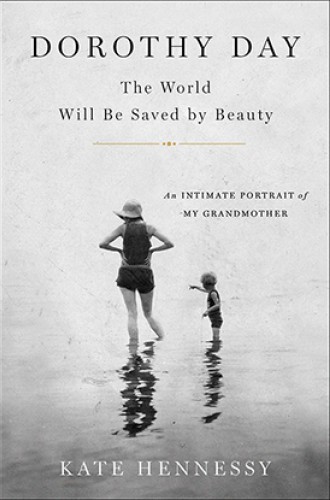The stubborn love and inflexible mercy of Dorothy Day
More than a memoir, Kate Hennessy's book about her grandmother is a participant biography written from the inside out.
She has been called “the most significant, interesting and influential person in the history of American Catholicism.” A candidate for sainthood, praised by Pope Francis in the U.S. Congress, a working journalist with millions of words to her credit, an obedient Catholic and a disobedient radical—37 years after her death, Dorothy Day remains an outsider to both her Christian and secular publics. We still don’t understand her. The utter simplicity of her mission coupled with the complexity of her personal needs leaves us, her admirers, in constant need of reliable interpretive guidance. Fortunately, we now have it in a stunningly beautiful memoir by her youngest granddaughter, Kate Hennessy.
If the first duty of life writing is to render a life, Hennessy has succeeded admirably. More than a memoir, her book is a participant biography written from the inside-out, rather than the outside-in. Everything we learn about Day (and we learn a great deal) originates in her complex relationships with others. These include an unfeeling father and an ineffective mother; her fellow bohemians “Gene” O’Neill, Peggy and Malcolm Cowley, and Kenneth Burke; and her lovers, communist Mike Gold, free-booting journalist Lionel Moise, and the father of her child, anarchist Forster Batterham. Hennessy also provides details of the “awful intimacy” and debilitating conflicts within the Catholic Worker family, touching on but not exploring her grandmother’s sometimes difficult relationship with Peter Maurin. Much of that story has been told, albeit in softer focus, by Day herself in her classic autobiography, The Long Loneliness.
In fact, the first 60 pages of Hennessy’s book read like an insider’s commentary on The Long Loneliness. But with the coming of Dorothy’s only child, Tamar, in 1926 (and subsequently Tamar’s nine children), everything changes. There the narrative deepens and takes on a rich and eloquent texture as Hennessy begins the delicate job of midwifing the truth of Dorothy and Tamar’s relationship. She manages to succeed by following two of Day’s journalistic precepts: she speaks the truth, and she tells it with unfeigned love. As Dorothy often said, “Love is the measure by which we will be judged.” In Hennessy’s book, this measure is the complicated, tattered love familiar to anyone who has been nurtured and stifled by the ambiguous blessings of family.





